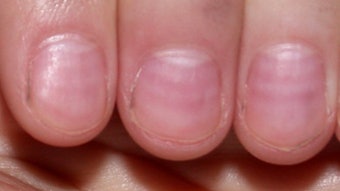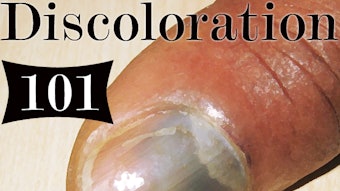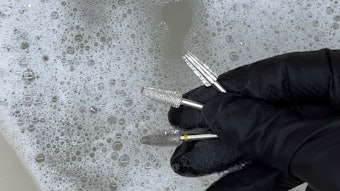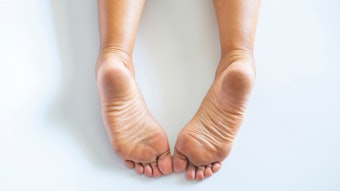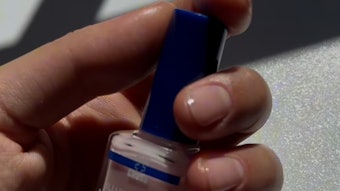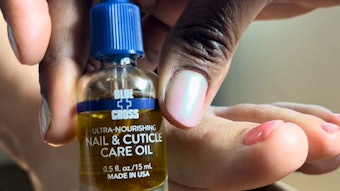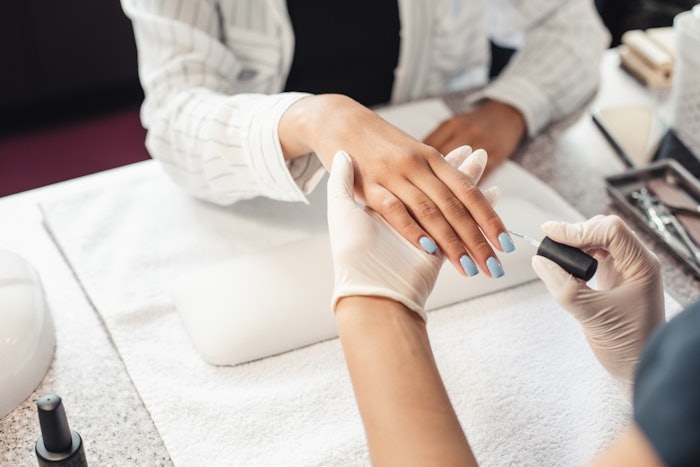
Allergic reactions to products used in salon services should be of vital concern to both professionals and consumers alike. Increased awareness and safe salon practices are our best methods of defense. Recent consumer publication articles report increasing incidence of allergic reactions to nail care products. While the incidents reported in these articles center on allergies to gel polishes, contact dermatitis or skin rashes from wearing traditional nail polishes or nail enhancement products (like acrylic nails, hard gels, and dips) are not uncommon. However, there is increased awareness of the causative link between these allergies and the popularity of gels and gel polishes, now available for do-it-yourselfers. Before 2010, gel polishes were not around, and gels were used primarily by licensed nail professionals. These products are now sold online and in mass retail for use at home by consumers, increasing the need for enhanced awareness.
Log in to view the full article
Allergic reactions to products used in salon services should be of vital concern to both professionals and consumers alike. Increased awareness and safe salon practices are our best methods of defense. Recent consumer publication articles report increasing incidence of allergic reactions to nail care products. While the incidents reported in these articles center on allergies to gel polishes, contact dermatitis or skin rashes from wearing traditional nail polishes or nail enhancement products (like acrylic nails, hard gels, and dips) are not uncommon. However, there is increased awareness of the causative link between these allergies and the popularity of gels and gel polishes, now available for do-it-yourselfers. Before 2010, gel polishes were not around, and gels were used primarily by licensed nail professionals. These products are now sold online and in mass retail for use at home by consumers, increasing the need for enhanced awareness.
What Is an Allergy?
A short definition available online says, “an allergy is a reaction by your immune system to something.” It could be anything an individual is exposed to through inhalation, ingestion or skin contact. Let’s focus on allergies from the skin contacting an offending substance. This allergy is also called allergic contact dermatitis and starts by one being ‘overexposed’ to a substance that is a skin sensitizer.
How Does an Allergy Start?
All allergic reactions involve at least one exposure to start the sensitization process. The sign of a rash, swelling or blistering of skin near the contact site should be taken seriously and steps taken to avoid further exposure. The initial reaction may not happen immediately but could take a few days to observe. However, once sensitized, a small amount of the allergen could trigger the reaction, with each succeeding exposure becoming more severe. Because we use our fingers for many tasks and touch our skin, reactions may be observed in areas other than the fingertips.
What Is a Skin Sensitizer?
Skin sensitizers are substances that can potentially cause allergic contact dermatitis when they react by covalent binding to skin proteins. In other words, skin sensitizers are chemically reactive substances that form covalent bonds with proteins. Examples of ‘reactive chemicals’ in popular nail care products that could be ‘skin sensitizers’ are (meth)acrylate monomers and cyanoacrylates.
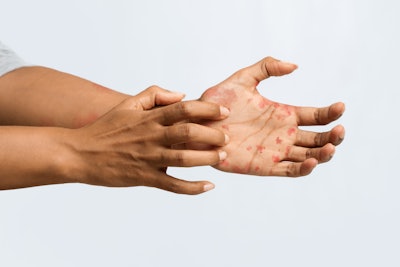
Why Should We Be Concerned?
Allergic contact dermatitis has no known cure. There are only palliative treatments to lessen discomfort and other effects of the reaction. An allergy is a lifelong condition and gets worse with succeeding exposure. For instance, because reactive chemicals such as (meth)acrylate monomers are also used in dental and orthopedic procedures, an allergy could preclude an individual from undergoing vitally needed surgeries. Additionally, sometimes a skin allergy induces a food allergy. As example, in a case cited involving carmine (a cosmetic colorant extracted from the cochineal insect Dactylopius coccus), the route of first sensitization was via the skin, not the intestine.
Potential Allergens
Some nail care product ingredients listed by the FDA as either skin sensitizers or potential allergens are below.
Acetonitrile: Found in artificial nail remover products.
Formaldehyde: Found in nail hardeners and also listed as formalin or methylene glycol.
Methacrylate Monomers: These ingredients are essential in gel polishes and other gel nail products.
Methacrylic Acid: Found in nail primers.
Phthalates: Found in nail polishes.
Toluene: Found in nail polishes.
Allergen Specific Ingredients
Potential allergen specific ingredients found in nail care products are provided here.
Nitrocellulose: This primary film former is found in traditional nail polishes.
Resins: These may include tosylamide/formaldehyde resin, alkyd resins, acrylates, vinyl polymers and polyesters.
Plasticizers: These may include camphor, dibutyl phthalate, dioctyl phthalate and tricresyl phosphate.
Solvents: These may include alcohol, toluene, ethyl acetate and butyl acetate
Colorants: D&C Red 7
Pearlizers: These may include guanine and bismuth oxychloride.
(Meth)acrylic glue: This glue is used to apply press-on nails and is used in pre-glued artificial nails to adhere to these artificial nails to the natural nail plate.
Ethyl 2-cyanoacrylate: This gel is used in dip nail services.
Benzoyl peroxide in acrylic powder and hydroquinone in the liquid component of acrylic nail enhancements are found to be occasional allergens. Although acrylic powder is a polymerized form of a (meth)acrylate, it still contains some unreacted monomer and could cause contact allergic dermatitis. Dipping fingers in acrylic powder could lead to overexposure and cause contact allergic dermatitis.
Can an Allergy Be Prevented?
Yes, allergies can be prevented by avoiding exposure to an offending substance, limiting exposure to any potential allergens, observing proper protocols and using appropriate personal protective equipment (PPE).
The Nail Professional's Role
How can nail professionals prevent developing contact allergic dermatitis, considering the numerous potential skin sensitizers present in popular nail care products? Avoid products containing known skin sensitizers is the most effective action, but when not possible, the next best thing is to minimize exposure. Here are some additional steps to consider:
- Wear gloves.
- Dispose of gloves immediately if the product gets on them to avoid the product getting on your client’s skin.
- Install a source capture ventilation system (for vapors and powders) at your nail service table and adequately maintain the equipment.
- Wear a mask and provide one for your client when working with acrylic powder or filing acrylic enhancements.
- Follow the manufacturer’s detailed use instructions for products and equipment. Insufficiently cured gel products contain monomers that can slowly migrate to the client’s skin.
- Do not mix and match different vendors' curing equipment and gel products.
- When removing the inhibition layer (uncured monomer) on gel nails, use one pad per nail to avoid transferring the uncured monomer on the pad to the next finger.
- If you accidentally get a product on your or your client’s skin, clean it off using the proper solvent or acetone and have your client wash their hands with soap and water.
- At the first sign of an adverse reaction (unexpected tingling or burning sensation), remove the product and advise the client that a patch test is recommended to help determine their risk of an allergic reaction to the product in use.
Ongoing Education
Allergic reactions can range from uncomfortable to potentially life threatening, depending upon levels of exposure and sensitization. Ongoing education and awareness are key to prevention, while advancements in the development of non-reactive products will help to eliminate allergic reactions in the future.
About the Author:
Vivian Valenty, Ph.D. (@nailpolishdoc), is the founder and president of VB Cosmetics, the creator and manufacturer of Dazzle Dry. She is also a member of Nailpro’s advisory board. She obtained her doctorate in chemistry from Penn State University, and for the past 33 years, has been creating products for the professional nail industry.
